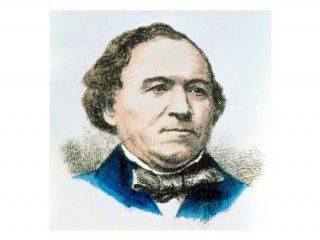
Jean-Baptiste Dumas biography
Date of birth : 1800-07-14
Date of death : 1884-04-10
Birthplace : Alès (Gard)
Nationality : French
Category : Science and Technology
Last modified : 2011-07-15
Credited as : Chemist, atomic weights,
On July 14, 1800, Jean Baptiste Dumas was born at Alais. In his youth he was apprenticed to an apothecary. In 1816 he moved to Geneva and studied physiological chemistry in the laboratory of A. Le Royer. In Geneva, Dumas met the famous scientist Alexander von Humboldt, who persuaded Dumas to move to Paris, where he would find greater scientific opportunities. This he did in 1823, and he was engaged as a lecture assistant in chemistry at the Ecole Polytechnique; he became professor of chemistry in 1835. During this period Dumas began to work on his major book, Treatise on Chemistry, and he also participated in the founding of the Central School for Arts and Manufactures.
In 1830 Dumas challenged the so-called dualistic theory of the great Swedish chemist Jons Jacob Berzelius. The dualistic theory stated that all compounds could be divided into positive and negative parts. Dumas presented instead a unitary theory which held that atoms of opposite charges could be substituted in compounds without causing much alteration in the basic properties of the compound. This theory was related to his belief in families of organic compounds, in which substitutions could be made with the fundamental characteristics of the family remaining unchanged. At this time Berzelius was at the height of his eminence and would accept no affront to his authority; such was the strength of his attack on Dumas that the latter did not continue the dispute. Later researches proved Dumas to have been more correct in his theories than was the Swedish master.
Dumas isolated various essences and oils from coal tar; developed a method for measuring the amount of nitrogen in organic compounds, which made quantitative organic analysis possible; and developed a new method of determining vapor densities. He also concerned himself with determining the atomic weights of such elements as carbon and oxygen and published a new list of the weights of some 30 elements in 1858-1860.
In addition to his scientific achievements, Dumas led an active public life during the reign of Napoleon III. He was minister of agriculture and commerce and then minister of education. He was also a senator, master of the French mint, and president of the municipal council of Paris. His public life ended with the downfall of the Second Empire in 1871. Dumas died in 1884 in Paris.
















